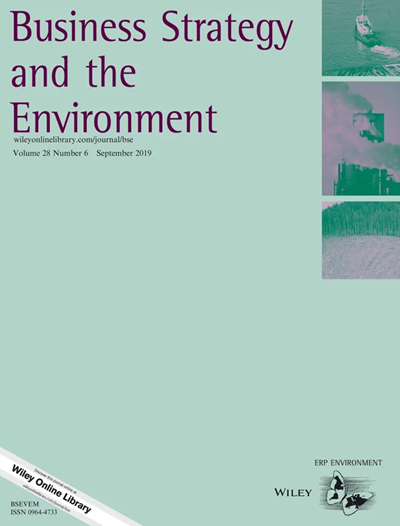The Role of Patents in Circular Innovation: The Case of Sustainable and Recyclable Materials in the Textile Industry
IF 13.3
1区 管理学
Q1 BUSINESS
引用次数: 0
Abstract
This article examines whether and how patenting advances circular innovation and therefore contributes to the sociotechnical transition toward a circular economy. Using the multilevel perspective (MLP) as a theoretical framework, we conducted a case study set in the empirical context of man‐made cellulosic fibers. These heavily patented fibers were a suitable subject for a case study because they are developed to produce more sustainable textile materials, thereby facilitating closed‐loop recycling systems. A total of 102 relevant patent families were identified and analyzed using Leximancer and qualitative data analysis software. The TEMPEST framework was applied to examine their alignment with the hierarchical levels of the MLP. According to the findings, material‐related patents, especially nano‐level innovations, appear central to circular product innovation systems. The results suggest that patented innovations have broad implications and support systemic circularity through coevolution across technological, industrial, and societal dimensions. Four propositions were developed regarding how material‐related patents contribute to circular innovations.专利在循环创新中的作用:以纺织行业的可持续和可回收材料为例
本文探讨了专利是否以及如何推进循环创新,从而有助于向循环经济的社会技术转型。使用多层次视角(MLP)作为理论框架,我们在人造纤维素纤维的经验背景下进行了案例研究。这些拥有大量专利的纤维是案例研究的合适主题,因为它们被开发用于生产更可持续的纺织材料,从而促进闭环回收系统。利用Leximancer和定性数据分析软件对102个相关专利族进行了鉴定和分析。应用TEMPEST框架来检查它们与MLP的层次水平的一致性。根据研究结果,与材料相关的专利,特别是纳米级创新,似乎是循环产品创新系统的核心。结果表明,专利创新具有广泛的影响,并通过技术、产业和社会维度的共同进化支持系统循环。关于材料相关专利如何促进循环创新,提出了四个命题。
本文章由计算机程序翻译,如有差异,请以英文原文为准。
求助全文
约1分钟内获得全文
求助全文
来源期刊

Business Strategy and The Environment
Multiple-
CiteScore
22.50
自引率
19.40%
发文量
336
期刊介绍:
Business Strategy and the Environment (BSE) is a leading academic journal focused on business strategies for improving the natural environment. It publishes peer-reviewed research on various topics such as systems and standards, environmental performance, disclosure, eco-innovation, corporate environmental management tools, organizations and management, supply chains, circular economy, governance, green finance, industry sectors, and responses to climate change and other contemporary environmental issues. The journal aims to provide original contributions that enhance the understanding of sustainability in business. Its target audience includes academics, practitioners, business managers, and consultants. However, BSE does not accept papers on corporate social responsibility (CSR), as this topic is covered by its sibling journal Corporate Social Responsibility and Environmental Management. The journal is indexed in several databases and collections such as ABI/INFORM Collection, Agricultural & Environmental Science Database, BIOBASE, Emerald Management Reviews, GeoArchive, Environment Index, GEOBASE, INSPEC, Technology Collection, and Web of Science.
 求助内容:
求助内容: 应助结果提醒方式:
应助结果提醒方式:


